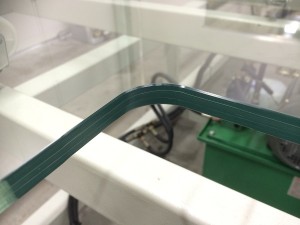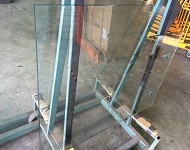 Stress.
Stress.
A customer’s recent query about ‘Deflection’ in relation to our Switchglass™ threw me for a moment. Ours is an electrical glass product, and there is Circuitry Deflection (as it applies to Electrical Engineering), Glass Deflection, and then other more common definitions of the word.
It transpired that the customer was interested only in the physical aspects of his Switchable Privacy Glass, intended for use as a floor panel. In this context, Glass Deflection refers to the ‘flexing’ or ‘stress’ of glass, and this is a measurable factor. The deflection factor relates to the breaking point of glass – or rather, to the point just before it will break.
At Switchglass we won’t laminate a privacy glass panel with glass of under 4mm thickness. A large privacy glass panel constructed of 2 x 3mm glass panes can flex (‘deflection’) and have a deleterious effect on the liquid crystals within the PDLC film at the panel’s core by squeezing them. A laminated glass panel constructed with 2 x 4mm (or thicker) panes will have minimal, non-damaging deflection. In respect to our client’s floor panel, it would be triple laminated (3 panes of glass) and have a final thickness of 30mm+. Rigid.
Clearly, any glass floor panel must be restricted in area for added safety, the Glass Deflection factor carefully measured by the Architects and Engineers who design each and every facet of a building’s componentry. Australia’s stringent design codes tabulate explicit stress values for glass, such as:
Weight = 2500 kg/m3
Young’s modulus of elasticity = 70 kN/mm2
Shear modulus of elasticity (G) = 30 kN/mm2
Poisson’s ratio = 0.22
Coefficient of thermal expansion = 8.5×10-6/C
Permissible deflection = structural span/60
So, what do these formulas mean?
I’m stressed just thinking about it!

